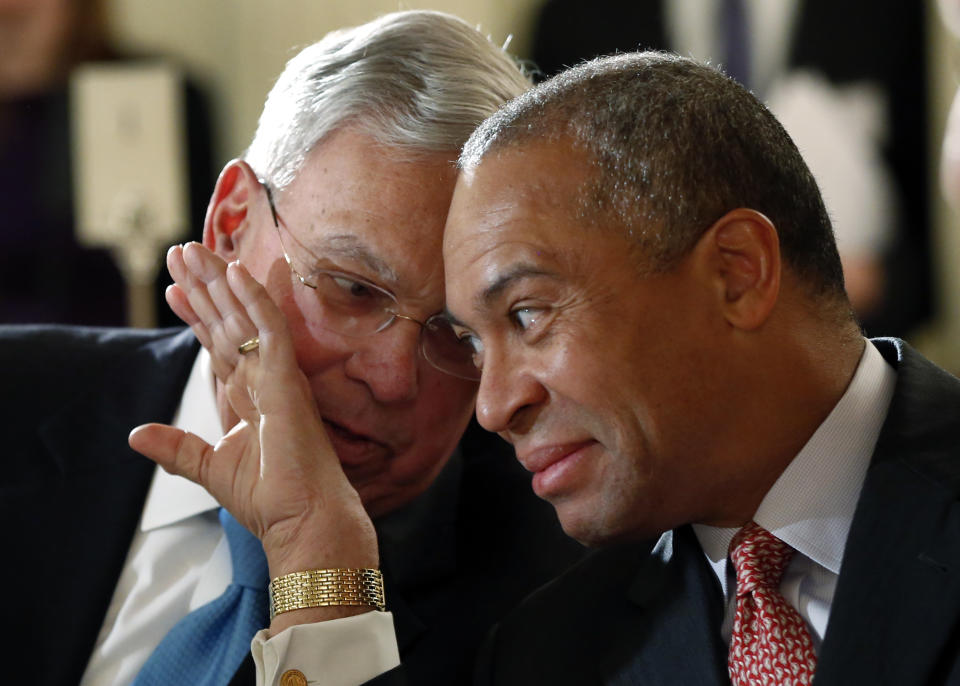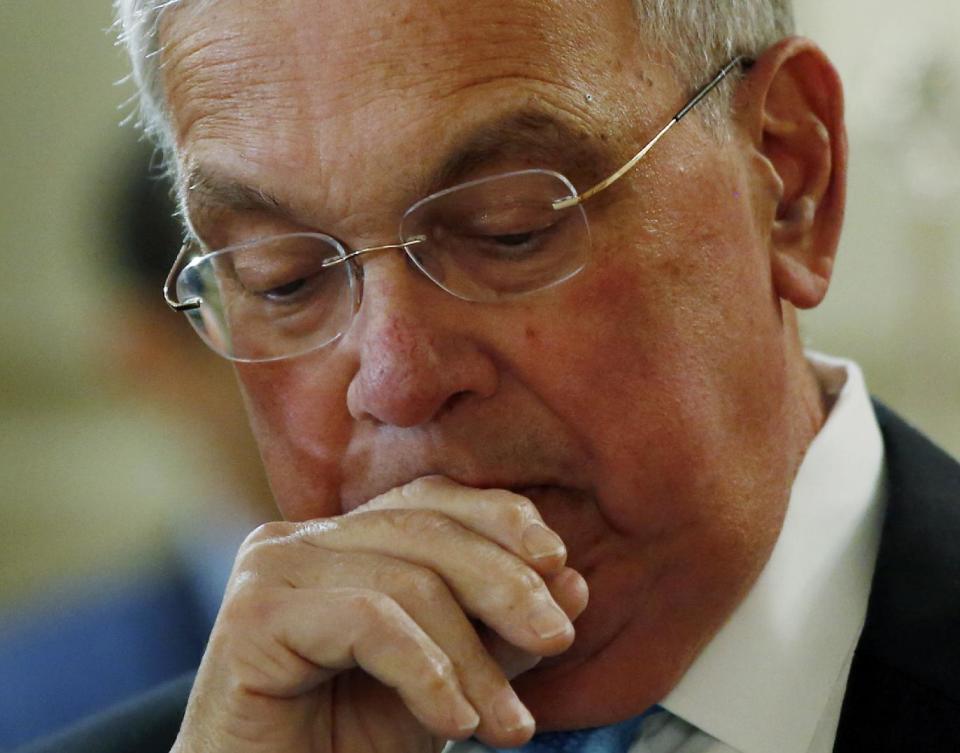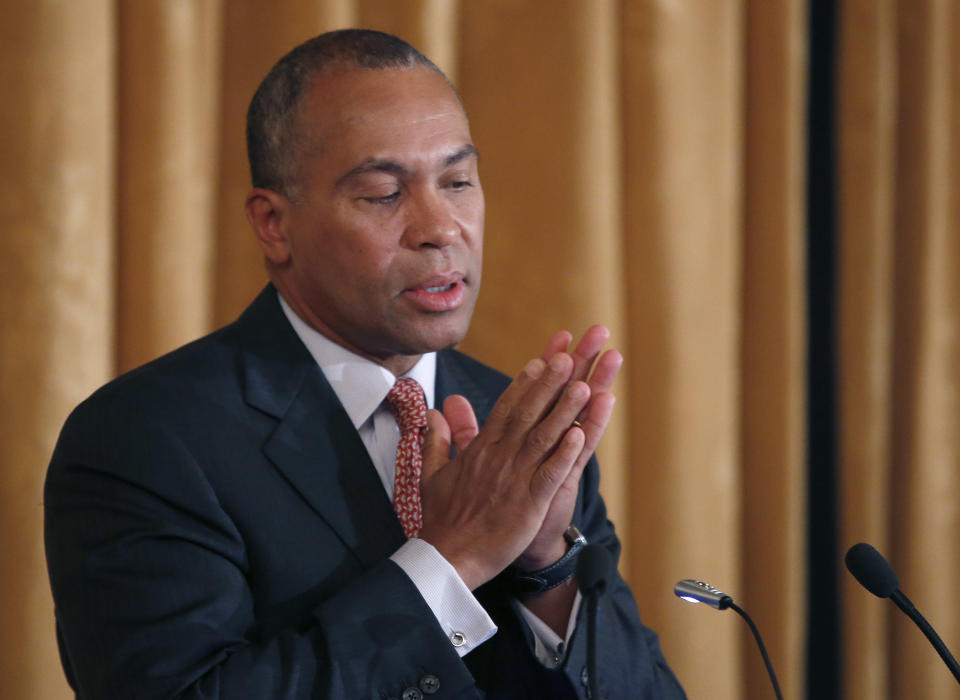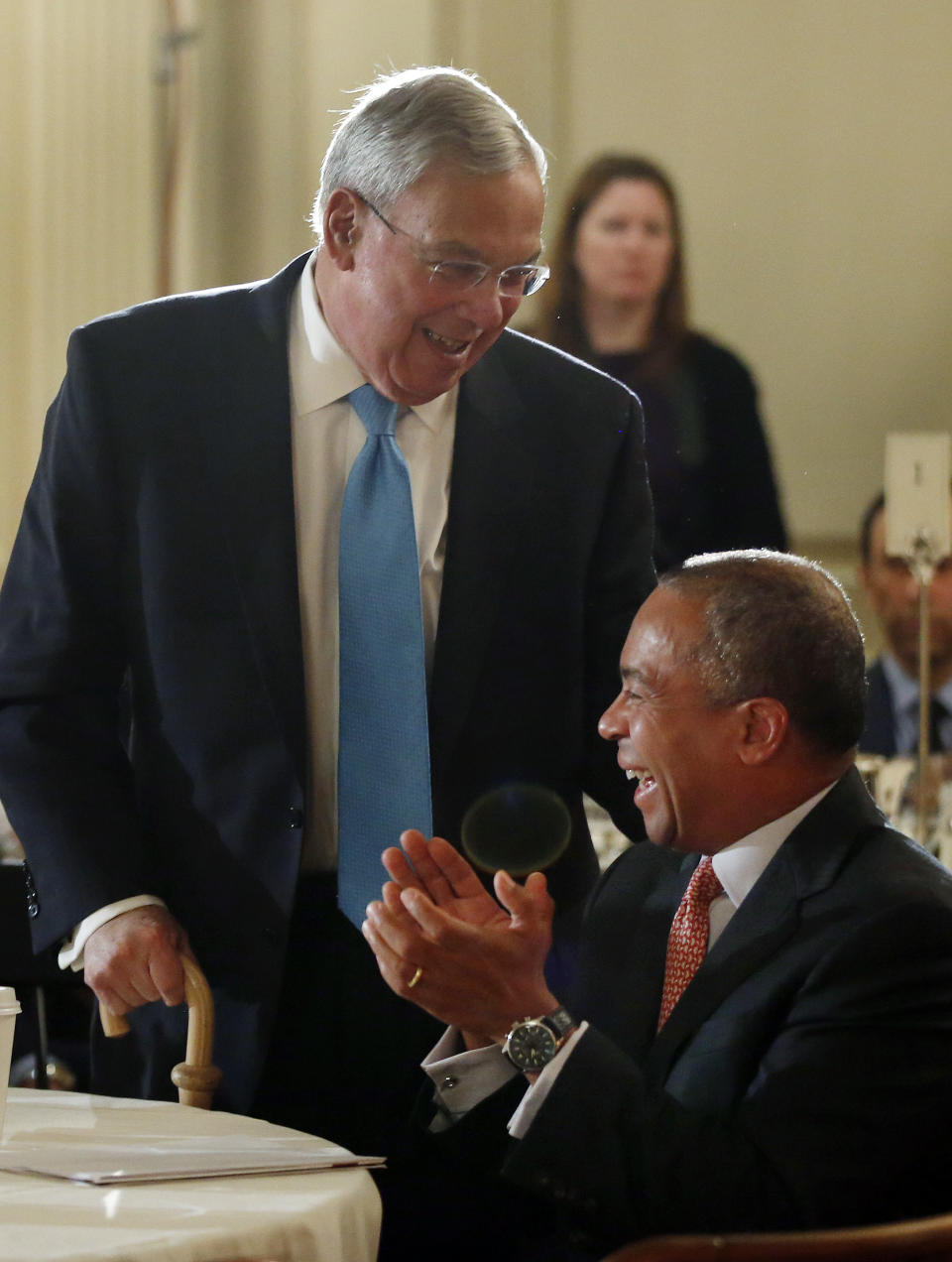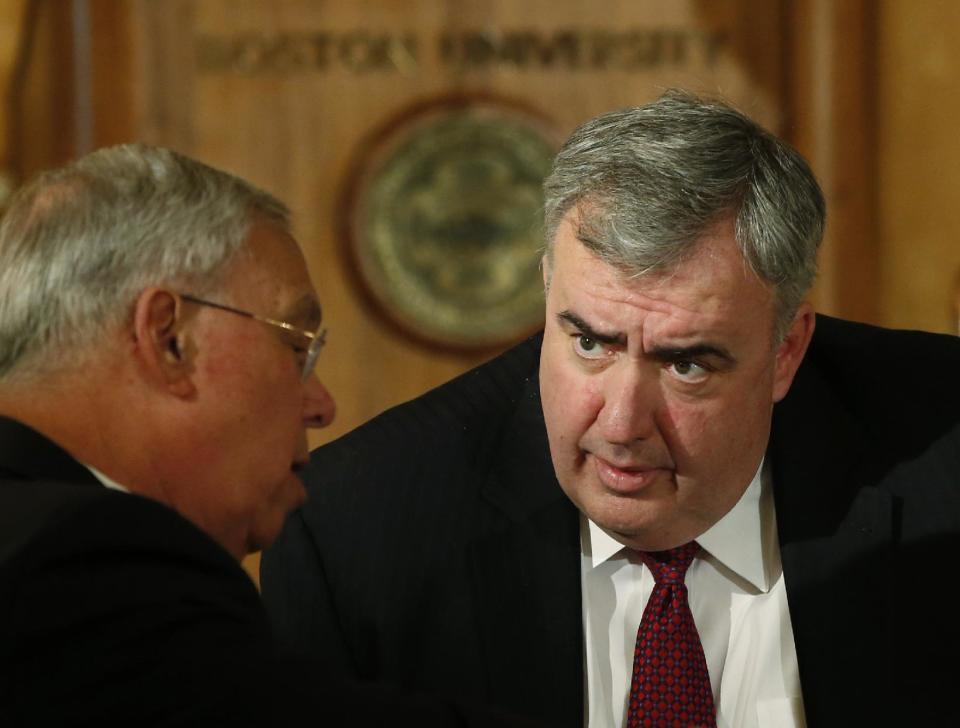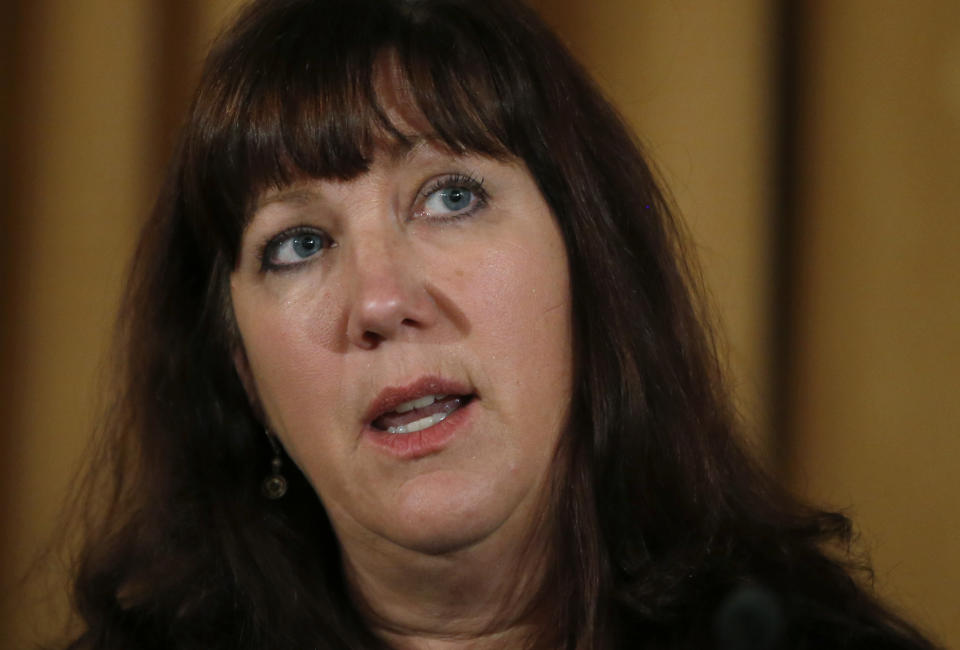Cooperation after marathon bombings is praised
BOSTON (AP) — In the moments after two bombs exploded near the finish line of last year's Boston Marathon, no one dared call it a terrorist attack. But after it became clear that these were not manhole cover explosions, "the word hung heavy in the air," Massachusetts Gov. Deval Patrick said Monday at a symposium on leading cities through crisis.
"The chaos of those early moments is hard to describe," Patrick told a crowd of about 200 municipal leaders, emergency responders and others gathered at Boston University.
Cooperation among emergency medical responders, government officials and law enforcement helped the city get through that day in April and the months since then, said Patrick and others who spoke at the event, which focused on the response to the marathon bombing.
"In so many ways, what we saw through the success of that experience was the power of working together," Patrick said.
Twin bombs placed near the finish line of last year's marathon killed three people and wounded more than 260. One suspect in the bombing was killed in a shootout with police several days later, while his brother survived and awaits trial.
Former Boston Mayor Thomas Menino said he and Patrick began creating a victims' assistance organization, the One Fund, within hours of the attack. The fund has distributed about $61 million to victims, and has raised millions more.
"Every country in the world donated to the One Fund — just think about that," Menino said.
Raising money for the victims helped bring the community together after the deadly attack, the former administrator of the fund said.
The fundraising success showed "a collective empathy" in the local community and the nation, Kenneth Feinberg said. He said it helped send a message to the attackers "how we as a people take care of our own."
The money was raised and distributed to victims within 75 days.
"We want everybody to know we're one community," Feinberg said.
The theme of the event was lessons learned from the attack. Speakers, including former Boston police Commissioner Ed Davis, public health officials and survivors, agreed that Boston's emergency medical response was swift and effective.
"I had everything that I needed offered to me," said Karen Rand, who was waiting at the finish line and was severely injured in the attacks. She had her left leg amputated below the knee. A close friend she was standing with, Krystle Campbell, was killed.
Still, Rand and others said there was room for improvement. When she was rushed to the hospital, she had Campbell's phone and identification with her, so Campbell's family was initially told she was alive, but they later discovered that she had been mixed up with Rand.
Rand's family didn't find out her whereabouts until nearly 12 hours later.
Rand said she believes "everybody did the best they could in a very challenging time," but hopes some system can be established to ensure that reliable identities of hospital patients can be made during disasters, perhaps through physical descriptions from family members.
"There has to be a way to identify someone," she said.
Davis strongly defended the decision by law enforcement to release photographs of the two suspects in the bombing: Dzhokhar Tsarnaev, 19, and his brother, Tamerlan Tsarnaev. 26. He said he pushed for release of the photos, taken from videos from the marathon scene.
"I wanted it out to protect my officers. And more important than the officers, I wanted it out to protect the community," Davis said.
"People had a right to defend themselves against these two suspects," he said.
Hours after the photos were released, MIT police officer Sean Collier was shot to death. Authorities say the brothers killed Collier in an attempt to get his gun.
"Tragically, Sean Collier was assassinated in his cruiser ... I think that he was snuck up on and murdered by cowards who would not approach directly," Davis said.

